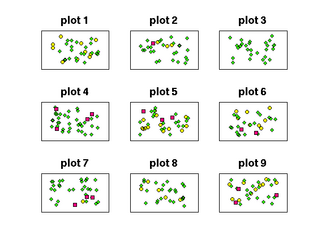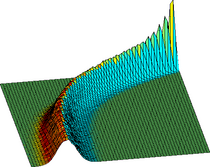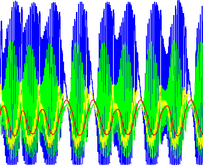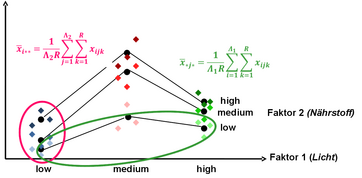Jan Freund
Research interests
My overarching interest is the transfer of paradigmatic models and methods from the field of theoretical physics and complex systems to other scientific fields, such as marine biology, ecology or neuroscience. In addition to the possibility of tracing observable phenomena from the aforementioned neighbouring sciences back to fundamental principles and mechanisms, there is often also a practical benefit, such as the optimisation or control of processes through the elucidation and quantification of causal mechanisms of action. My repertoire of methods often includes a stochastic component, whether in model formulation through stochastic processes or in empirical data analysis through statistical concepts.
Ongoing projects
- GreenHAB: Risks of climate change driven Harmful Algal Blooms in Greenland waters -
indicators, tipping points and impacts on local ecosystem functioning and services.
Project duration 01.Sep.2023 to 31.Dec.2026 in the BMBF project network "Polar Regions in Transition".
- AGELESS: Leveraging long-term planktonic diversity data to develop a framework to assess and protect biodiversity in areas beyond national jurisdiction.
Project duration 01.Sep.2024 to 31.Aug.2027 as part of the BMBF Strategy for Research for Sustainability (FONA) on the topic "Blue Ocean - Development of recommendations for action to conserve and protect marine biodiversity".
Selected publications
- Luhede A, Freund JA, Dajka JC, Upmann T. The value of information in predicting harmful algal blooms. Journal of Environmental Management (2025) 373:123288.
doi.org/10.1016/j.jenvman.2024.123288
- Wiedemann C, Wächter M, Peinke J, Freund JA. Improved estimation of drift coefficients using optimal local bandwidths. Eur. Phys. J. B (2024) 97:48.
doi.org/10.1140/epjb/s10051-024-00686-4
- Gault JA, Freund JA, Hillebrand H, Gross T. Dissimilarity analysis based on diffusion maps. Oikos (2023) 12:1-12.
doi.org/10.1111/oik.10249
- Merder J, Röder H, Dittmar T, Feudel U, Freund JA, Gerdts G, Kraberg A, Niggemann J. Dissolved organic compounds with synchronous dynamics share chemical properties and origin. Limnol. Oceanogr. (2021) 66:4001-4016.
doi.org/10.1002/lno.11938
- Hillebrand H, Donohue I, Harpole WS, Hodapp D, Kucera M, Lewandowska AM, Merder J, Montoya JM, Freund JA. Thresholds for ecological responses to global change do not emerge from empirical data. Nature Ecology & Evolution (2020) 4 (11), pp.1502-1509.
doi.org/10.1038/s41559-020-1256-9
- Merder J, Freund JA, Feudel U, Hansen CT, Hawkes JA, Jacob B, Klaproth K, Niggemann J, Noriega-Ortega BE, Osterholz H, Rossel PE, Seidel M, Singer G, Stubbins A, Waska H, Dittmar T. ICBM-OCEAN: Processing Ultrahigh-Resolution Mass Spectrometry Data of Complex Molecular Mixtures. Analytical Chemistry (2020) 92 (10), pp.6832-6838.
doi: 10.1021/acs.analchem.9b05659
- Lewandowska AM, Jonkers L, Auel H, Freund JA, Hagen W, Kucera M, Hillebrand H. Scale dependence of temporal biodiversity change in modern and fossil marine plankton. Global Ecology and Biogeography (2020) 29 (6), pp.1008-1019.
doi: 10.1111/geb.13078
- Freund JA, Mieruch S, Scholze B, Wiltshire K, Feudel, U. Bloom dynamics in a seasonally forced phytoplankton-zooplankton model: Trigger mechanisms and timing effects. Ecological Complexity (2006) 3 (2), pp.129-139.
doi.org/10.1016/j.ecocom.2005.11.001
- Freund JA, Schimansky-Geier L, Hänggi P. Frequency and phase synchronisation in stochastic systems. Chaos: An Interdisciplinary Journal of Nonlinear Science (2003) 13 (1), pp.225-238.
doi.org/10.1063/1.1500497

![[Translate to English:]](/f/5/_processed_/3/2/csm_ICBM-Logo-transparent-_91fe1c6774.png)

 Type of course: VL & UE SWS: 2 & 2
Type of course: VL & UE SWS: 2 & 2
 Type of course: VL & UE SWS: 2 & 2
Type of course: VL & UE SWS: 2 & 2 Type of course: VL & UE SWS: 2 & 2
Type of course: VL & UE SWS: 2 & 2